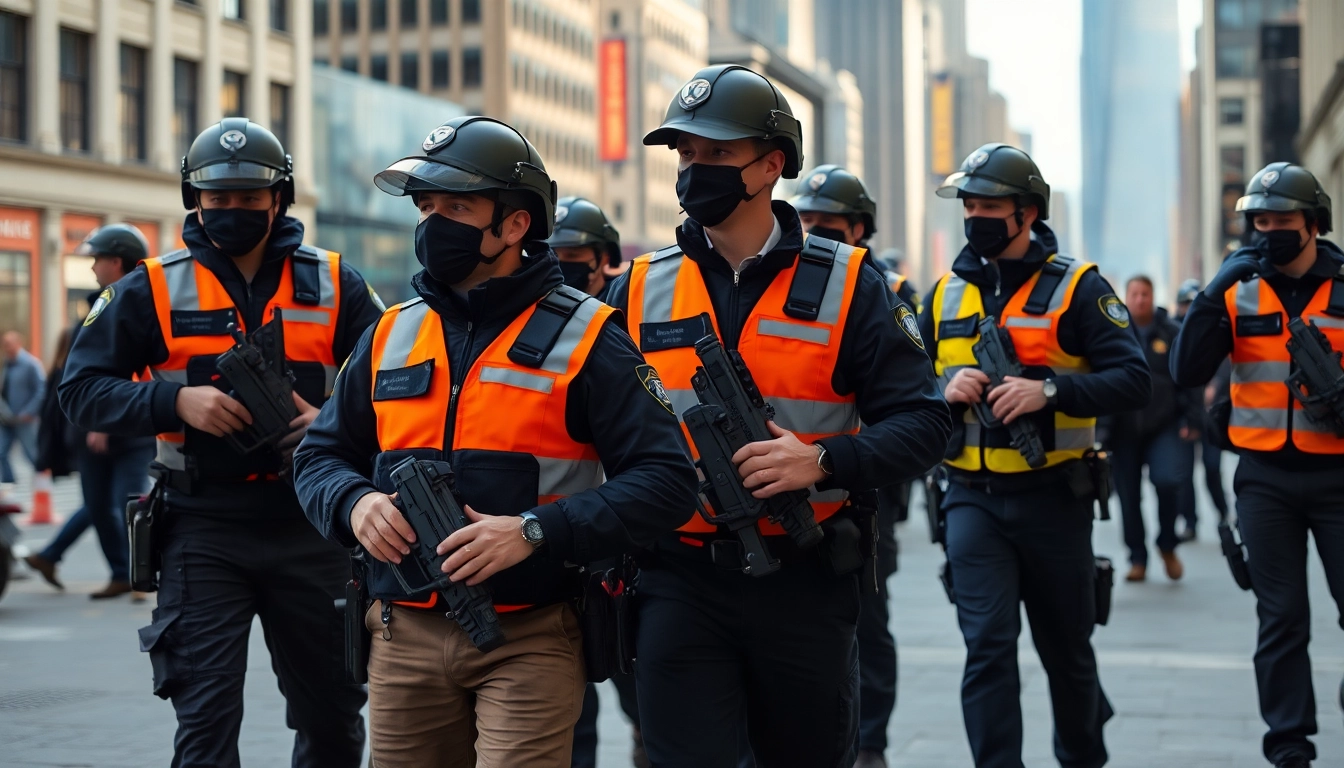
Understanding Effective Response Strategies for Security Services
Introduction to Response in Security Services
In the realm of security services, the concept of Response plays a pivotal role in ensuring safety, efficiency, and reliability. Whether it’s a natural disaster, a security breach, or medical emergencies, the ability to formulate a swift and accurate response can save lives and minimize harm. This article delves deep into the intricacies of response strategies within security services, emphasizing the necessity for well-defined protocols, effective training, and the integration of modern technologies.
Defining Response in the Security Context
Response, in a security context, refers to the actions taken in reaction to an event, threat, or occurrence. It encompasses a wide range of activities, from deploying security personnel to an incident scene to executing emergency protocols. A well-structured response plan defines the roles, responsibilities, and procedures necessary to effectively handle various situations, ensuring that threats are addressed aptly and efficiently.
The Importance of Rapid Response
The speed of response can often be the decisive factor between a minor incident and a catastrophic situation. Rapid response capabilities allow security personnel to mitigate risks, prevent situations from escalating, and restore safety swiftly. Delays in response can lead to increased damage, whether it be physical property, financial loss, or even human life. Hence, establishing a rapid response framework that is well-practiced and understood by all stakeholders is crucial for any security operation.
Key Components of an Effective Response Plan
An effective response plan should consist of several critical components, including:
- Risk Assessment: Understanding potential risks and the likelihood of various scenarios allows organizations to prepare accordingly.
- Clear Protocols: Developing detailed protocols that outline the specific steps to be taken for each type of threat enhances response effectiveness.
- Resource Allocation: Ensuring that adequate resources, including personnel, technology, and equipment, are available is essential for an effective response.
- Communication Channels: Establishing clear communication protocols ensures information flows efficiently amongst all involved parties.
- Training and Drills: Regular training and scenario-based drills prepare personnel to respond effectively under pressure.
Types of Security Response
Proactive vs. Reactive Response Strategies
Response strategies can primarily be categorized into proactive and reactive approaches. Proactive strategies involve anticipating threats before they occur and implementing measures to prevent incidents from happening. This could include surveillance systems, community engagement, and background checks. Reactive strategies, on the other hand, come into play after an incident has occurred. This involves responding to the events as they unfold, applying the necessary protocols to manage the situation effectively.
Emergency Response Protocols
Emergency situations necessitate specific protocols to manage various crises efficiently. These can include evacuation plans, first-aid procedures, and coordination with local emergency services. Setting these protocols beforehand allows security teams to react without hesitation and ensures that all team members understand their roles during an emergency.
Community Engagement in Response Efforts
Engaging with the community enhances the overall response strategies by fostering trust and collaboration. When community members are aware of the security measures in place, they are likely to support and cooperate during incidents. This partnership can also lead to quicker detection of irregularities, enabling a faster response to potential threats.
Technological Advances in Response
Utilizing Surveillance Tools for Enhanced Response
Modern security firms employ various surveillance technologies to bolster their response capabilities. This includes CCTV systems equipped with advanced analytics that can detect unusual behavior or patterns in real-time. Utilizing these tools not only improves situational awareness but also speeds up the response time as potential threats can be identified and addressed much earlier.
GPS and Tracking Systems
GPS and tracking systems are invaluable in enhancing response efforts, especially in large properties or during large events. By tracking the location of security personnel and assets, response coordinators can deploy resources more efficiently. It also enables rapid mobilization of teams to areas requiring immediate attention.
Software for Real-Time Communication and Coordination
Effective communication is often the backbone of successful security response. Real-time communication software facilitates better coordination among team members during incidents, ensuring rapid dissemination of information and instructions. These systems allow for quick updates, resource allocation, and the collaboration necessary during unfolding situations.
Training and Development for Effective Response
Importance of Continuous Training
In the security sector, continuous training is crucial to maintaining a skilled workforce capable of responding effectively. Security threats evolve, necessitating ongoing education and skills development to keep up with new challenges. Regular training sessions ensure that personnel remain familiar with the latest protocols and technologies, thereby enhancing their response capabilities.
Scenario-Based Training Exercises
Scenario-based training exercises are instrumental in preparing security personnel for real-life incidents. These exercises simulate various emergency situations, allowing staff to practice their response protocols in a controlled environment. The exercises can vary from handling natural disasters to active shooter scenarios, providing comprehensive preparation for a wide range of incidents.
Measuring Response Effectiveness and Learning Outcomes
After training exercises and actual incidents, it’s vital to assess the effectiveness of the response. Measuring response effectiveness involves analyzing the time taken to address situations, the success of communication among team members, and the overall outcome of the incident. Post-incident reviews also provide opportunities for learning and improvement, enabling continuous evolution of response strategies.
Case Studies on Response Implementation
Successful Response Examples
Analyzing successful response cases offers valuable insights into effective strategies. Successful instances often involve meticulous planning, well-defined chains of command, and seamless communication, resulting in favorable outcomes even in challenging situations. These case studies can provide benchmarks for other organizations looking to enhance their response frameworks.
Lessons Learned from Response Failures
Equally important are the lessons drawn from unsuccessful responses. Analyzing failures can highlight flaws in planning, communication breakdowns, and response delays, providing critical insights for future improvements. Understanding these shortcomings allows security services to refine their protocols and better prepare for future incidents.
Future Trends in Security Response Approaches
The landscape of security response is ever-evolving, driven by advancements in technology and changing societal expectations. Future trends may include increased integration of artificial intelligence for threat assessment, enhanced community-policing initiatives, and a stronger emphasis on mental health training for personnel. Keeping abreast of these trends is essential for security services to adapt and remain effective in their response efforts.
